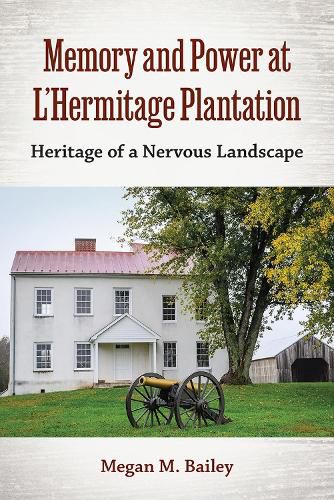Readings Newsletter
Become a Readings Member to make your shopping experience even easier.
Sign in or sign up for free!
You’re not far away from qualifying for FREE standard shipping within Australia
You’ve qualified for FREE standard shipping within Australia
The cart is loading…






This title is printed to order. This book may have been self-published. If so, we cannot guarantee the quality of the content. In the main most books will have gone through the editing process however some may not. We therefore suggest that you be aware of this before ordering this book. If in doubt check either the author or publisher’s details as we are unable to accept any returns unless they are faulty. Please contact us if you have any questions.
In this book, Megan Bailey uses archaeological data and historical records to document the treatment of enslaved people at L'Hermitage Plantation in Maryland from 1794 to 1827. Bailey uses the concept of the "nervous landscape"-a space where power is not absolute and where resistance is possible-to show how the Vincendiere family's fear of losing control of their workforce drove their brutality.
Bailey shows how the Vincendieres' strategies to maintain their power were inscribed in the plantation's landscapes through the design of the enslaved peoples' village, which maximized surveillance and control while suppressing individuality. Despite the family's behavior, enslaved people found ways to exercise agency, including through use of yard space, forming relationships with local residents, and running away. Considering fear and anxiety as a fundamental element of the colonial experience, Bailey argues that emotion should be considered in archaeological analyses of the past.
Today, L'Hermitage Plantation is a part of the Monocacy National Battlefield operated by the National Park Service. Bailey discusses the public interpretation of the site and how excavations of the plantation highlighted a more complicated narrative than the prevailing story of Civil War conflict and heroism. Memory and Power at L'Hermitage Plantation uses archaeology to connect the Vincendieres to the present-day landscape in a complex, layered narrative of precarity and control.
$9.00 standard shipping within Australia
FREE standard shipping within Australia for orders over $100.00
Express & International shipping calculated at checkout
This title is printed to order. This book may have been self-published. If so, we cannot guarantee the quality of the content. In the main most books will have gone through the editing process however some may not. We therefore suggest that you be aware of this before ordering this book. If in doubt check either the author or publisher’s details as we are unable to accept any returns unless they are faulty. Please contact us if you have any questions.
In this book, Megan Bailey uses archaeological data and historical records to document the treatment of enslaved people at L'Hermitage Plantation in Maryland from 1794 to 1827. Bailey uses the concept of the "nervous landscape"-a space where power is not absolute and where resistance is possible-to show how the Vincendiere family's fear of losing control of their workforce drove their brutality.
Bailey shows how the Vincendieres' strategies to maintain their power were inscribed in the plantation's landscapes through the design of the enslaved peoples' village, which maximized surveillance and control while suppressing individuality. Despite the family's behavior, enslaved people found ways to exercise agency, including through use of yard space, forming relationships with local residents, and running away. Considering fear and anxiety as a fundamental element of the colonial experience, Bailey argues that emotion should be considered in archaeological analyses of the past.
Today, L'Hermitage Plantation is a part of the Monocacy National Battlefield operated by the National Park Service. Bailey discusses the public interpretation of the site and how excavations of the plantation highlighted a more complicated narrative than the prevailing story of Civil War conflict and heroism. Memory and Power at L'Hermitage Plantation uses archaeology to connect the Vincendieres to the present-day landscape in a complex, layered narrative of precarity and control.